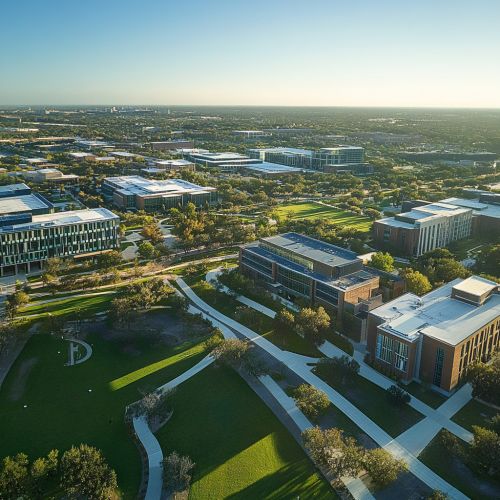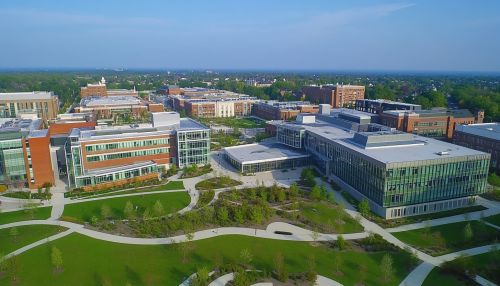University of Houston
History
The University of Houston (UH) was established in 1927 as Houston Junior College. It was initially part of the Houston Independent School District and operated as a junior college. In 1934, the institution became a four-year university and was renamed the University of Houston. The university's growth was rapid, and by 1947, it had moved to its current location, a 667-acre campus in southeast Houston. The institution gained state support in 1963, becoming a state university, and joined the University of Houston System in 1977.
Campus and Facilities
The University of Houston's main campus is a vibrant urban setting that hosts a variety of architectural styles, from modernist to classical. The campus is home to over 40,000 students and includes numerous academic buildings, research facilities, and student residences. Key facilities include the M.D. Anderson Library, the Cullen Performance Hall, and the Science and Engineering Research Center. The university also boasts state-of-the-art laboratories and research centers, such as the Texas Center for Superconductivity.


Academic Structure
The University of Houston is organized into 16 colleges and schools, offering a wide range of undergraduate, graduate, and doctoral programs. Notable colleges include the Cullen College of Engineering, the Bauer College of Business, and the Law Center. The university is known for its strong emphasis on research, with significant contributions in fields such as energy, health, and the arts. UH is classified as a Tier One research university by the Carnegie Classification of Institutions of Higher Education.
Research and Innovation
Research at the University of Houston is a cornerstone of its academic mission. The university is home to several nationally recognized research centers, including the Texas Center for Superconductivity, the Center for Advanced Computing and Data Systems, and the Health and Biomedical Sciences Center. The university's research initiatives are supported by substantial funding from federal agencies, private industry, and state grants. UH researchers have made significant advancements in energy, materials science, and biomedical engineering.
Student Life
Student life at the University of Houston is diverse and dynamic, with over 500 student organizations and clubs. The university offers a range of extracurricular activities, including cultural events, sports, and community service opportunities. The Student Center is a hub for student activities, providing spaces for meetings, events, and socializing. UH is also known for its vibrant Greek life, with numerous fraternities and sororities active on campus.
Athletics
The University of Houston's athletic teams, known as the Houston Cougars, compete in the NCAA Division I and are members of the American Athletic Conference. The university has a rich athletic tradition, particularly in basketball and football. The Cougars have produced numerous professional athletes and have a strong fan base. The university's athletic facilities include the TDECU Stadium, the Fertitta Center, and the Yeoman Fieldhouse.
Community Engagement
The University of Houston is deeply committed to community engagement and public service. The university partners with local organizations and businesses to address community needs and foster economic development. UH's community outreach programs include educational initiatives, health services, and cultural events. The university also plays a significant role in the Houston economy, contributing to workforce development and innovation.
Notable Alumni
The University of Houston has a distinguished list of alumni who have made significant contributions in various fields. Notable alumni include Elizabeth Warren, U.S. Senator and former presidential candidate; Jim Parsons, Emmy Award-winning actor; and Hakeem Olajuwon, Hall of Fame basketball player. The university's alumni network is active and engaged, providing support and mentorship to current students and recent graduates.
